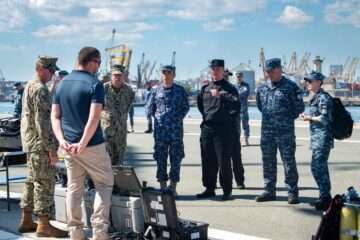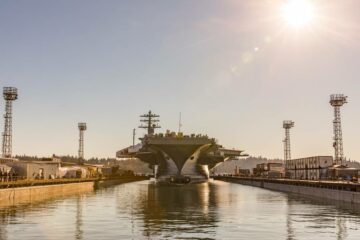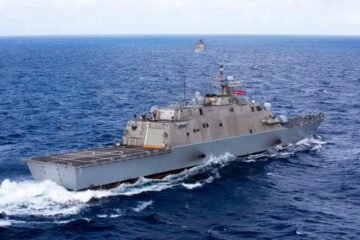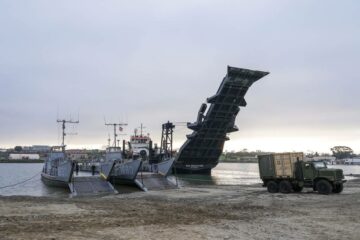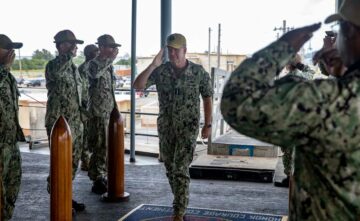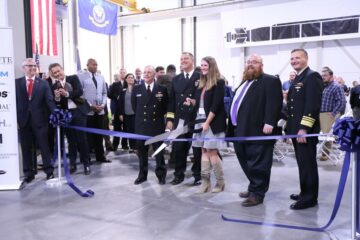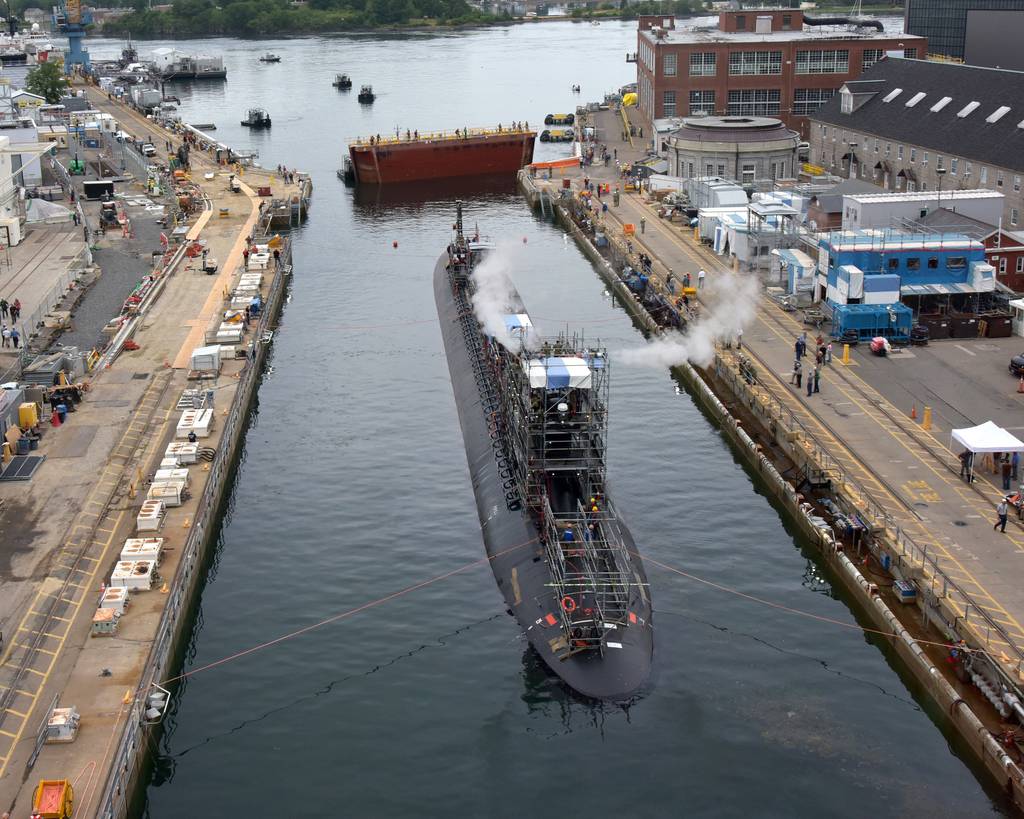
WASHINGTON — The U.S. Navy and the Defense Department completed an updated study of the submarine-industrial base, its upcoming workload, and what the military and industry ought to do to bolster the sector.
Previous studies — which informed about $6.3 billion in past and planned future government spending to shore up suppliers and prepare the industrial base to increase its output — looked at what it would take to prepare prime contractor General Dynamics Electric Boat and its thousands of suppliers to build one Columbia-class and two Virginia-class submarines a year, Jay Stefany, the acting assistant secretary of the Navy for research, development and acquisition, told Defense News.
Despite past spending, readiness of the in-service fleet has lagged, as has construction on the Virginia attack subs.
So this newest study takes a broader look at the full workload — not just the so-called one-plus-two construction rate of submarines but also in-service submarine sustainment and additional work to support the AUKUS trilateral agreement between Australia, the United Kingdom and the U.S., Stefany said.
This submarine-industrial base study, called SIB-25, also takes a specific look at workforce development, strategic outsourcing and advanced technology that could support this entire range of workload.
The Navy and the Pentagon are briefing this study to lawmakers and their staffs, but have not publicly released the results.
SIB-25 informed the Biden administration’s recent supplemental spending request, which asked for $3.4 billion in spending on the sector. According to a fact sheet provided by Rep. Joe Courtney, D-Conn., the supplemental includes $2.5 billion to bolster the submarine-industrial base through five lines of effort: supplier development; shipbuilder and supplier infrastructure; workforce development; technology advancements; and strategic outsourcing.
It also includes $558 million in operations and maintenance dollars to support improvements to the Navy’s public shipyards that perform most of the submarine maintenance and repair work, plus another $282 million in military construction funds to improve the yards’ infrastructure.
In addition to the SIB-25 study, the Navy also recently crafted a 15-year maintenance strategy for its attack submarine fleet. Two-thirds of that fleet is operationally available, compared to a goal of 80%. This maintenance strategy will help guide the Navy to reaching its goal by fiscal 2028 and then keep up that readiness even as the industrial base is also supporting its highest construction rate in 40 years.
Megan Eckstein is the naval warfare reporter at Defense News. She has covered military news since 2009, with a focus on U.S. Navy and Marine Corps operations, acquisition programs and budgets. She has reported from four geographic fleets and is happiest when she’s filing stories from a ship. Megan is a University of Maryland alumna.
- SEO Powered Content & PR Distribution. Get Amplified Today.
- PlatoData.Network Vertical Generative Ai. Empower Yourself. Access Here.
- PlatoAiStream. Web3 Intelligence. Knowledge Amplified. Access Here.
- PlatoESG. Carbon, CleanTech, Energy, Environment, Solar, Waste Management. Access Here.
- PlatoHealth. Biotech and Clinical Trials Intelligence. Access Here.
- Source: https://www.defensenews.com/naval/2023/10/30/submarine-sector-study-looks-at-busy-repair-schedule-aukus-work/
- :has
- :is
- :not
- $2.5 billion
- $3
- $UP
- 11
- 2009
- 2028
- 40
- 70
- a
- About
- According
- acquisition
- acting
- addition
- Additional
- advanced
- Advanced Technology
- advancements
- Agreement
- also
- an
- and
- Another
- ARE
- AS
- asked
- Assistant
- At
- attack
- Australia
- available
- base
- between
- biden
- Billion
- boat
- bolster
- Briefing
- broader
- Budgets
- build
- busy
- but
- by
- called
- compared
- Completed
- construction
- Contractor
- could
- covered
- crafted
- Defense
- Defense Department
- Department
- Development
- do
- dollars
- dynamics
- effort
- Electric
- Entire
- Even
- fact
- Filing
- Fiscal
- five
- FLEET
- Focus
- For
- four
- from
- full
- funds
- future
- General
- geographic
- goal
- Government
- government spending
- guide
- Have
- help
- highest
- HTTPS
- images
- improve
- improvements
- in
- includes
- Increase
- industrial
- industry
- informed
- Infrastructure
- IT
- ITS
- joe
- jpg
- just
- Keep
- Kingdom
- lawmakers
- lines
- Look
- looked
- LOOKS
- maintenance
- Marine
- Maryland
- Megan
- Military
- million
- most
- Newest
- news
- of
- on
- ONE
- Operations
- output
- Outsourcing
- past
- pentagon
- perform
- planned
- plato
- Plato Data Intelligence
- PlatoData
- plus
- Prepare
- Prime
- Programs
- provided
- public
- publicly
- range
- Rate
- reaching
- Readiness
- recent
- recently
- released
- repair
- Reported
- reporter
- request
- research
- Results
- s
- Said
- schedule
- secretary
- sector
- she
- sheet
- since
- specific
- Spending
- staffs
- Stories
- Strategic
- Strategy
- studies
- Study
- supplier
- suppliers
- support
- Supporting
- Take
- takes
- Technology
- that
- The
- the United Kingdom
- their
- then
- this
- thousands
- Through
- to
- told
- two
- two-thirds
- u.s.
- U.S. Navy
- United
- United Kingdom
- university
- University of Maryland
- upcoming
- updated
- virginia
- What
- when
- which
- will
- with
- Work
- Workforce
- Workforce Development
- would
- year
- years
- zephyrnet


